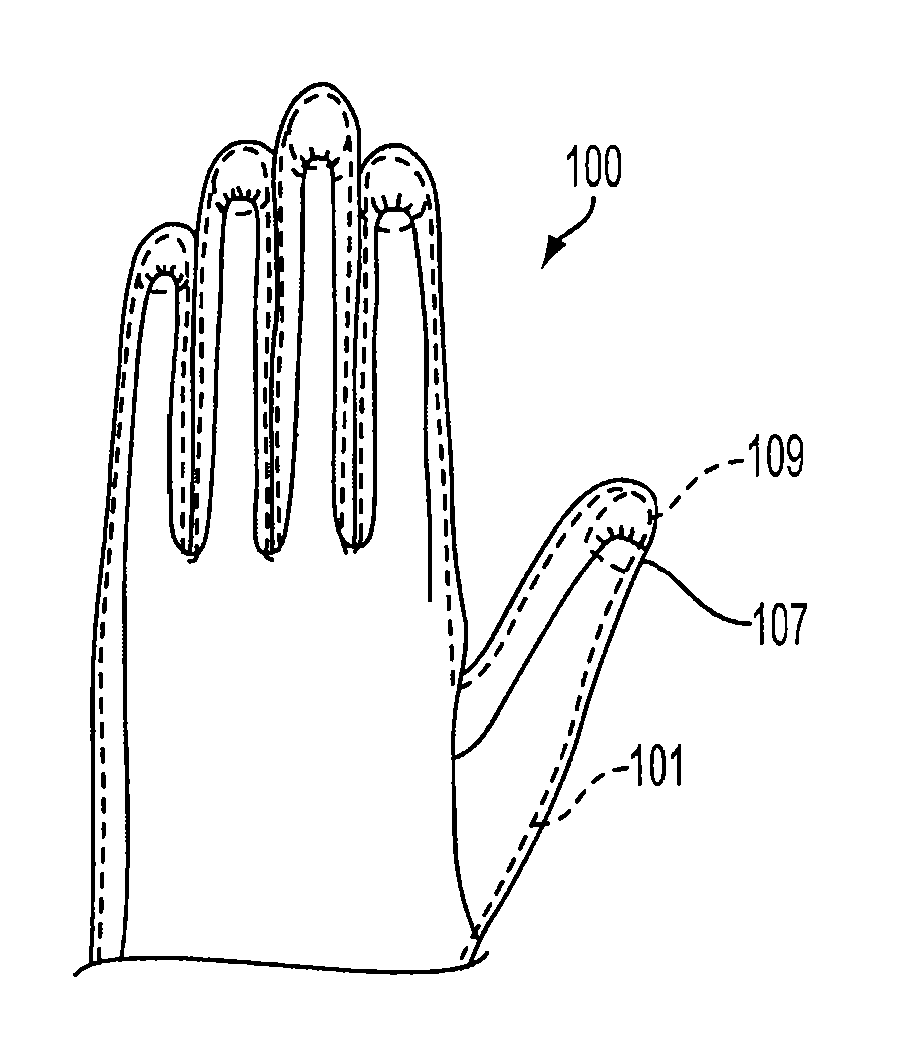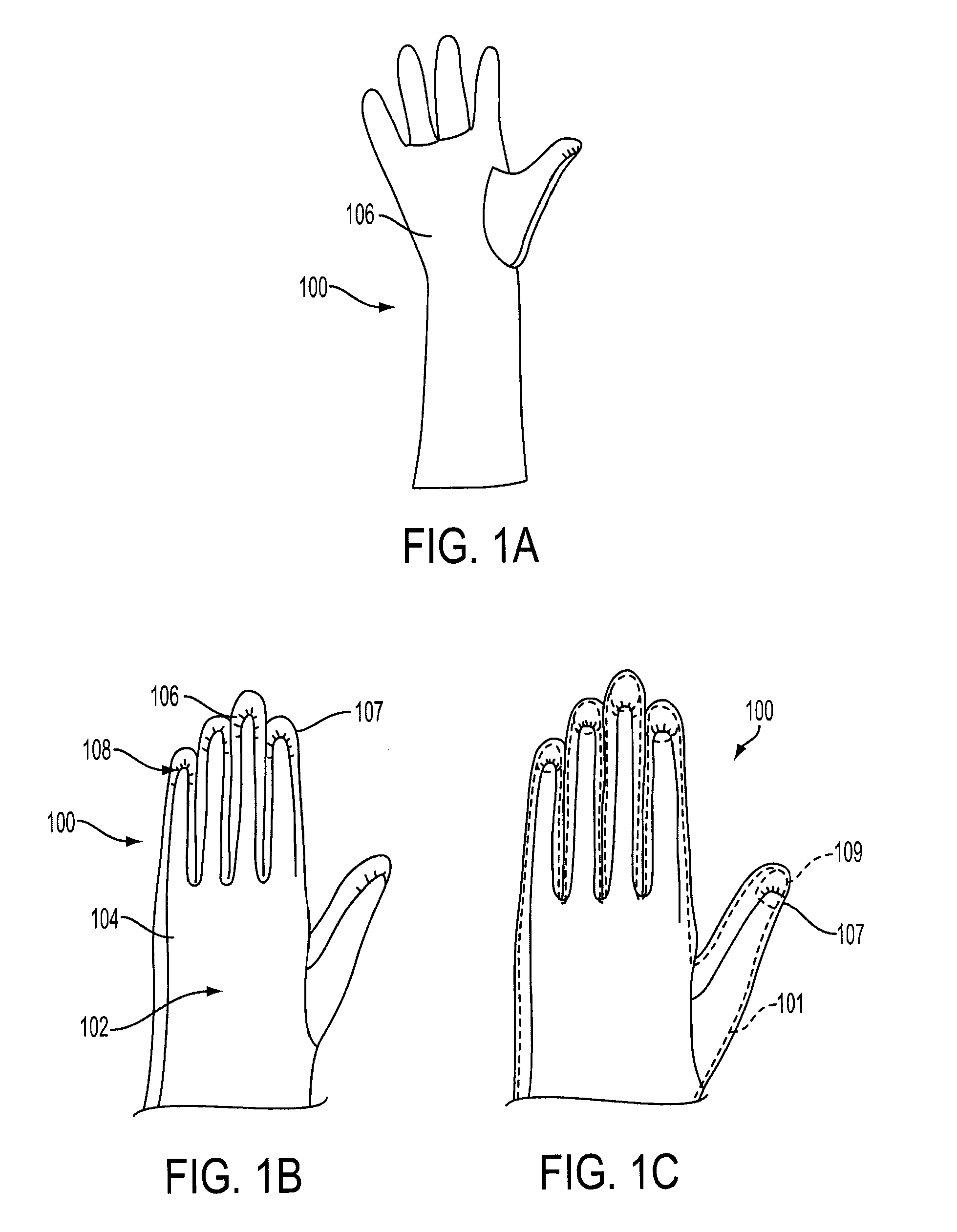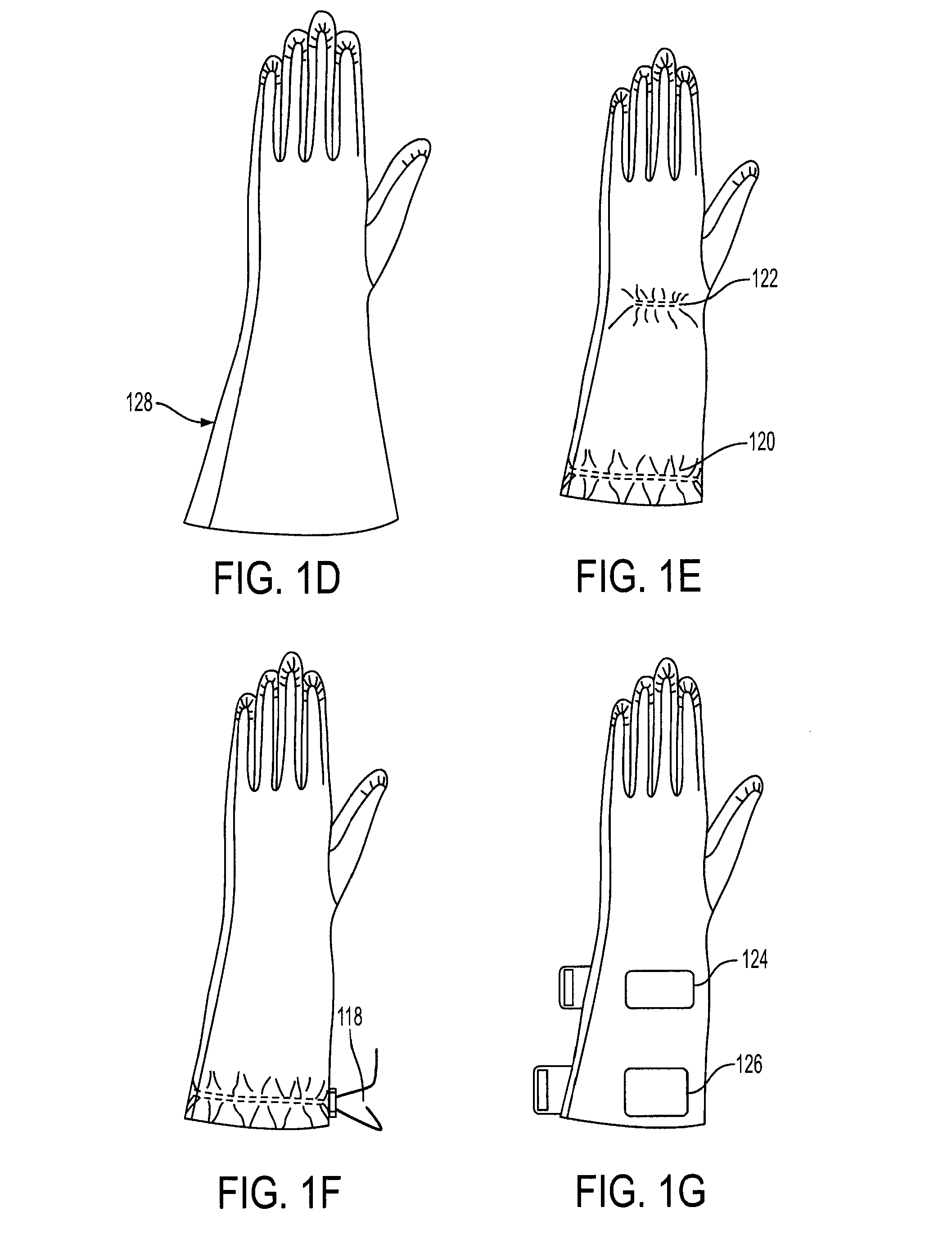Puncture And/Or Cut Resistant Glove Having Maximized Dexterity, Tactility, And Comfort
a glove and puncture resistance technology, applied in the field of glove systems, can solve the problems of affecting the comfort and tactile sensitivity of wearers, vanishingly small puncture resistance of latex gloves, and strong negative influence on dexterity and tactile sensitivity
- Summary
- Abstract
- Description
- Claims
- Application Information
AI Technical Summary
Benefits of technology
Problems solved by technology
Method used
Image
Examples
example 1
Glove Made from Interlock Knit Polyester
[0083]A textile was made from a 70 denier polyester yarn with 68 filaments per yarn. The textile was an interlock knit prepared on a 42-gauge machine with the final knit having 62 wales / inch and 58 courses / inch. An exemplary material, procured from Gehring Textiles, Garden City, N.Y., having the physical properties listed in Table 1, was subjected to a standard calendering process known in the art and conducted by Gehring Textiles to compact the knit. The calendering process reduced the thickness of the textile from the original 0.44 mm to 0.30 mm without altering the weight. A shear thickening fluid, described in more detail below, was then applied to the calendered fabric.
[0084]The shear thickening fluid was prepared by dispersing amorphous, spherical, silica particles in 200 average molecular weight polyethylene glycol. The particles were Nan-O-Sil silica, supplied by Energy Strategy Associates of Old Chatham, N.Y. The particles were disper...
PUM
 Login to View More
Login to View More Abstract
Description
Claims
Application Information
 Login to View More
Login to View More - R&D
- Intellectual Property
- Life Sciences
- Materials
- Tech Scout
- Unparalleled Data Quality
- Higher Quality Content
- 60% Fewer Hallucinations
Browse by: Latest US Patents, China's latest patents, Technical Efficacy Thesaurus, Application Domain, Technology Topic, Popular Technical Reports.
© 2025 PatSnap. All rights reserved.Legal|Privacy policy|Modern Slavery Act Transparency Statement|Sitemap|About US| Contact US: help@patsnap.com



